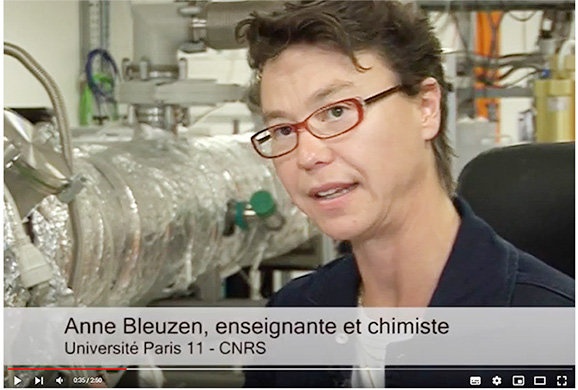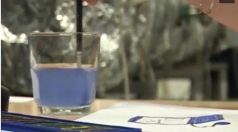Prussian blue has been prized by artists since the 18th century. Today, scientists are taking a keen interest in this pigment by studying what happens when some of its iron atoms are replaced by cobalt atoms.
This research was carried out on the infrared beamline AILES in 2011. As part of our series 'Next Chapter,' we reconnected with the scientists filmed in 2011 and asked them how their research has progressed since then.

Researcher Anne Bleuzen interviewed in 2011 during her experiments on the AILES beamline.
In 2011, the AILES beamline of the SOLEIL synchrotron hosts chemist Anne Bleuzen, who delves into Prussian blue, a pigment highly valued by painters since the 18th century. It is a compound of iron and cyanide, and when slightly modified, for example, by replacing some iron atoms with cobalt atoms, it acquires properties that have become the focus of extensive research worldwide. These new compounds open up a vast field of research, known as "Prussian blue analogues" or "PBA."
PBAs can indeed take on two distinct states, each associated with a different color—blue and brown. These two states can be "activated" by a stimulus, whether it be light, temperature, or pressure. So, we now have tiny objects with two states that can be controlled—does that remind you of anything? It’s precisely the basis of a binary coding system. Each state can be interpreted as a 0 or a 1. Based on this, it could become possible to create extremely small computer memories.
But to achieve this, many obstacles must be overcome, and Anne Bleuzen sets out to tackle each one, relying every time on the versatile tool that is the synchrotron.
First, she needs to control the transition from one state to the other, "from 0 to 1," and vice versa. Normally, this switching requires very low temperatures, around -200°C, which is highly impractical for creating computer devices. In 2012, with the help of the combination of X-rays from the ODE beamline and infrared rays from the SMIS beamline, Anne succeeded in achieving this transition at room temperature—a significant breakthrough!
Next, it is necessary to create nanomaterials from PBAs that could become the building blocks for new electronic components. In 2018, on the SAMBA beamline at SOLEIL, Anne received confirmation that she had successfully synthesized these valuable nanocrystals. They are indeed "photo-switchable": they can transition between states under the influence of light.
Another way to activate PBAs is by using pressure. In 2012, on ODE and SMIS, Anne applied external pressure to slightly distort the material, enabling the transition at room temperature. In 2022, she turned her attention to another kind of pressure, not physical but chemical. PBAs contain interstitial cations that exert stress on the main structure. Once again on the ODE beamline, she conducted analyses and gained a better understanding of how these cations interact with the cyanide-cobalt-iron complex.
Finally, to envision the creation of electronic components one day, it is necessary to manufacture tiny structures that resemble the elements of circuits. Two experiments conducted by Anne, in 2010 and 2017, laid the groundwork for this. She managed to "grow" nanocrystals in the form of pillars, starting from molecules in solution.
Anne Bleuzen’s ideas continue to evolve in the PBA galaxy. Moreover, Prussian blue analogues are generating real excitement in fields such as electric batteries, catalysis, and even radioactive decontamination.

